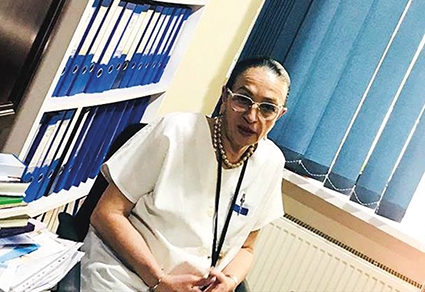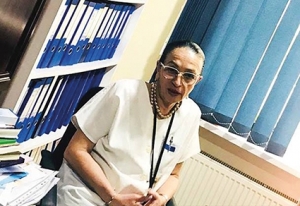Multiple Sclerosis: Major Cause of Non-Traumatic Disorders among Younger Patients
On May 30, the International Day for Multiple Sclerosis is celebrated. This year, Georgia joined the celebration. The purpose of the campaign being to raise public awareness of the disease and support patients suffering from it.
Multiple sclerosis is a chronic, progressive neurological disease and about 2.3 million people worldwide suffer from the disease. The first symptoms are revealed among 20-40-year-olds, with multiple sclerosis among younger patients seen as the main cause for non-traumatic disabilities. According to unofficial statistics, approximately 1,100 patients suffer with multiple sclerosis in Georgia.
Marina Janelidze, Professor of Clinical Neurology Department at Tbilisi State Medical University, spoke to us about the symptoms, challenges and problems regarding treatment.
“Multiple sclerosis is a chronic progressive disease of the central nervous system, characterized by immune inflammation, which includes brain and spinal cord white matter,” she tells us. “The disease is characterized by different clinical forms and symptoms. In the nervous system, the nervous fibrous membrane myelin, becomes damaged causing inflammatory demyelination which destroys the brain nerve cells. The symptoms can be very diverse. The disease may begin with loss of feeling, pins and needles in the upper and lower limbs, loss of vision or balance, weakness and tension in the limbs and disrupted coordination. At the initial stage, these symptoms are characterized by a disruptive nature but regress after some time. Such an attack may be observed two or three times a year. In rare cases, multiple sclerosis can be characterized by chronic progressive symptoms. Pathological, overwhelming fatigue is very characteristic to multiple sclerosis. Over time, frequent attacks are accompanied by the development of disabilities. Inflammatory demyelination and neuron death can occur even when the patient does not express clinical exacerbation.”
At what age does the disease develop and how feasible is it to manage?
The disease occurs among 20-40-year-olds and is seen 2-3 times more often in women. In the last 20 years, countries around the world have been fighting the disease. There are more medicines that help stop the progression of the disease. “Immunity modifier” drugs are a recent development to treat the disease, preventing recurrence of attacks and dramatically reducing development of the disease.
What would you advise people suffering from multiple sclerosis? What type of lifestyle is recommended?
Sunbathing, saunas and other heat treatments are not recommended for people suffering from multiple sclerosis, as the heat causes an exacerbation of the symptoms. I recommend avoiding sun in summer and drinking as much water as possible. Moreover, seasonal infections should be avoided because it can provoke an attack. The main objective of treating multiple sclerosis is to reduce the incidence of the disease at an early stage and prevent the development of disabilities.
How affordable is the treatment?
In Georgia, patients suffering from multiple sclerosis cannot receive adequate treatment as it is very expensive. Around 1000 GEL worth of medicine is needed monthly and funding is not provided by the state or insurance companies, as it commonly is internationally. It is crucial to treat this disease as of high importance since it affects hardworking youth and women at maternity age. A State program is needed to treat multiple sclerosis in order for patients to receive high-quality treatment based on modern medical developments.











